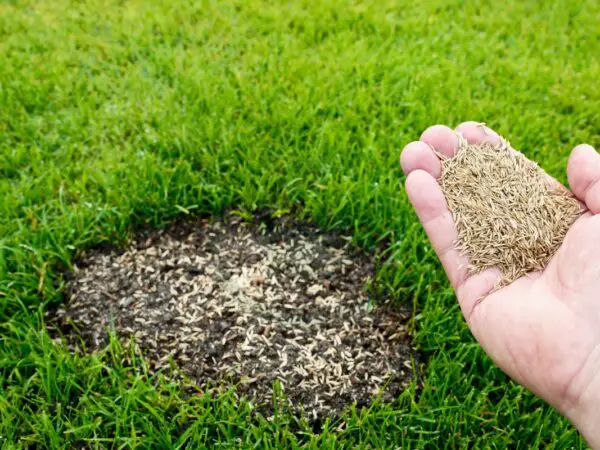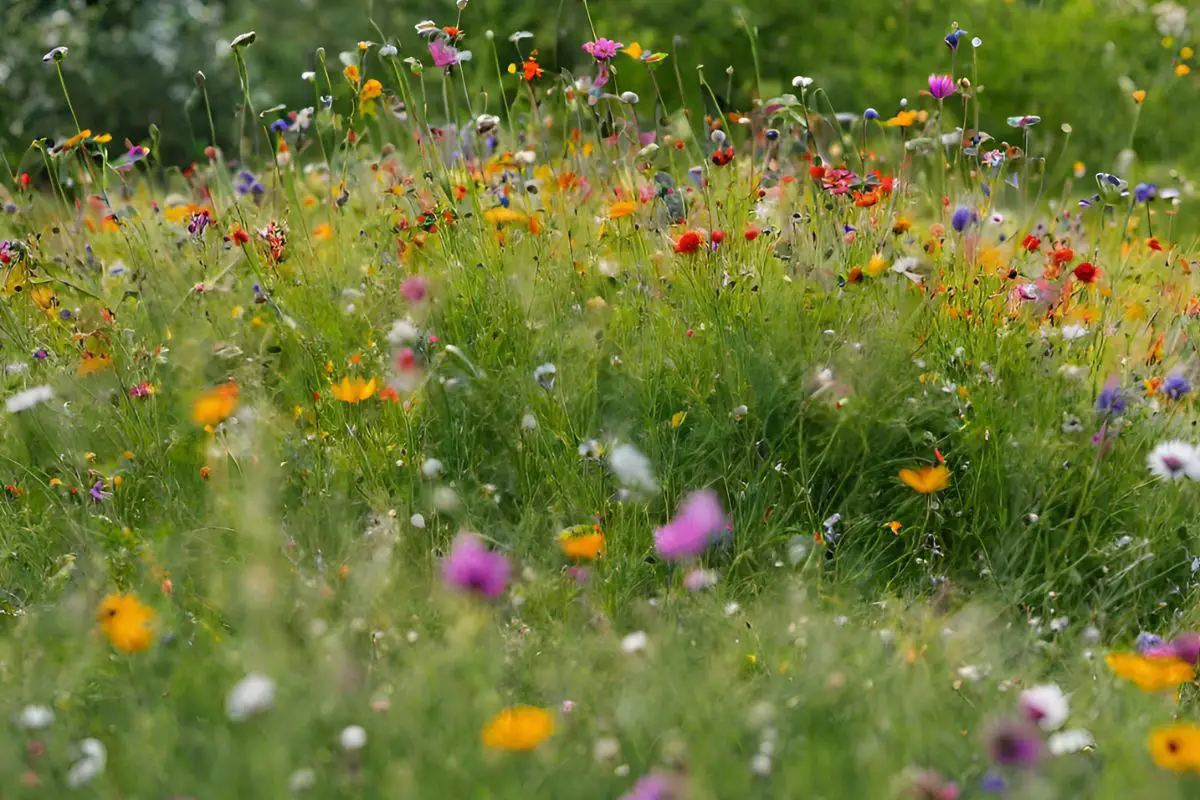
Curious about adding a pop of color to your lawn with wildflower seeds? Wondering if you can simply scatter wildflower seeds on your grass? The answer might surprise you. While traditional grass lawns offer uniformity and low maintenance, wildflowers bring vibrancy and attract pollinators. By scattering wildflower seeds on your grass, you can create a captivating blend of colors and textures, transforming your yard into a pollinator-friendly oasis. Embrace the contrast between the structured look of grass and the untamed beauty of wildflowers for a unique and eco-friendly landscape that bursts with life.
Key Takeaways
- Prepare the Soil: Before scattering wildflower seeds on your grass, ensure the soil is well-prepared by removing weeds and loosening the top layer for better seed germination.
- Choose the Right Sowing Technique: Select the most suitable sowing technique based on the type of wildflower seeds you have, whether broadcasting, hand seeding, or using a seed spreader.
- Provide Adequate Aftercare: After sowing the seeds, water the area regularly, especially during dry spells, and monitor for weed growth to help the wildflowers thrive.
- Encourage Pollinators: By planting wildflowers, you can attract essential pollinators like bees and butterflies to your garden, supporting biodiversity and ecosystem health.
- Overcome Challenges: Be prepared for common challenges such as competition from existing grass, invasive species, or unfavorable weather conditions by adjusting your approach accordingly.
- Inspiration from Success Stories: Draw inspiration from success stories of others who have created beautiful wildflower meadows, showcasing the potential and beauty of incorporating wildflowers into your lawn.
Understanding Wildflowers
Benefits
Enhancing biodiversity in the ecosystem is crucial for maintaining a healthy environment. By scattering wildflower seeds on grass, you can introduce a variety of plant species that support different forms of wildlife.
Adding vibrant colors to the landscape is one of the immediate visual benefits of planting wildflowers. The array of colors not only beautifies the surroundings but also creates a visually appealing natural habitat.
Scattering wildflower seeds on grass helps attract pollinators like bees and butterflies, essential for the pollination process. This, in turn, supports the growth and reproduction of various plants in the ecosystem.
Seed Selection
Choosing native wildflower seeds is important as they are adapted to the local climate and soil conditions. This increases their chances of successful growth and survival.
Consider opting for seed mixes that contain a variety of wildflower species. This ensures a diverse range of blooms throughout the growing season, attracting different pollinators and adding more visual interest to your landscape.
Opting for perennial wildflowers offers long-lasting beauty year after year. Perennials establish strong root systems, allowing them to bloom annually without needing replanting.
Best Planting Times
Spring vs Autumn
Spring planting allows for immediate growth, with warmer temperatures and longer daylight hours promoting rapid germination and development of young plants.
Autumn planting sets the stage for early spring blooms, as seeds undergo cold stratification during winter months, breaking dormancy and preparing for early growth when temperatures rise.
Consider weather conditions when deciding on the optimal planting time. Adequate moisture levels and moderate temperatures support seed germination and establishment for successful wildflower growth.
Preparing the Lawn
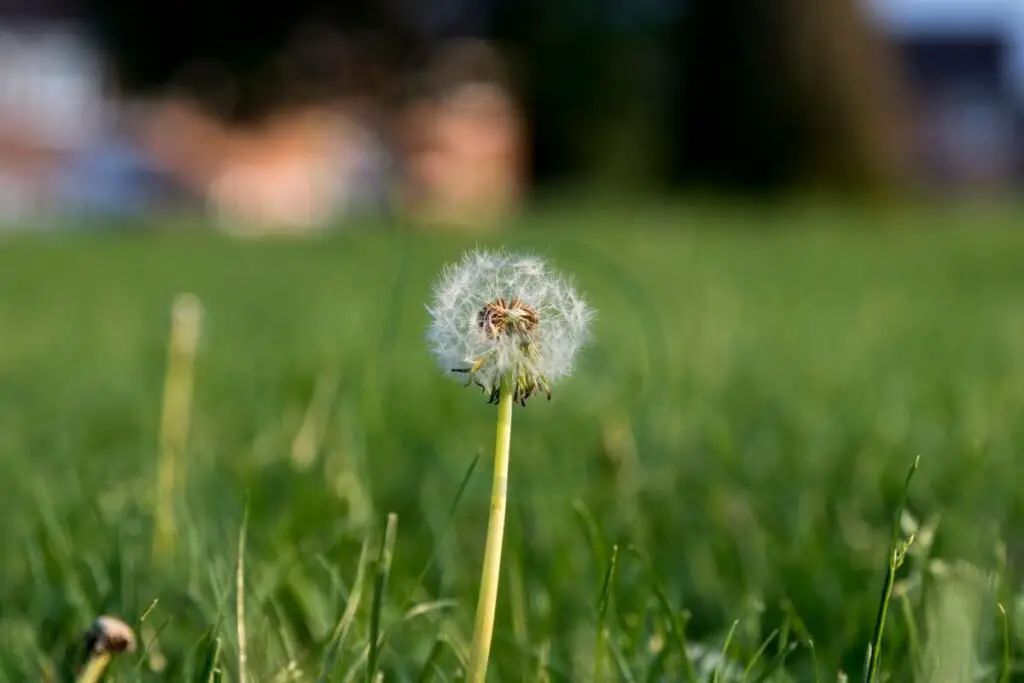
Why Prepare
Preparing the soil is crucial for better seed germination. It creates an optimal environment for wildflowers to take root and thrive. Removing grass before scattering wildflower seeds helps prevent weed competition and allows the wildflowers to establish themselves without hindrance. This process significantly improves overall wildflower growth and health, ensuring a vibrant and flourishing meadow.
Removing Grass
Rototilling
Rototilling involves breaking up compacted soil, promoting better root penetration for the upcoming wildflowers. By incorporating organic matter into the soil, rototilling enriches it, providing essential nutrients for seed germination. This method also aids in achieving successful germination by ensuring adequate seed-to-soil contact, fostering healthy growth.
Sod Cutters
Efficiently removing existing grass with sod cutters prepares a clean seedbed for planting wildflowers. By eliminating established grass roots, sod cutters reduce competition for resources like water and sunlight, giving newly scattered seeds a competitive edge. This process creates a blank canvas for wildflower seeds to flourish without being overshadowed or choked out by pre-existing vegetation.
Hand Tools
For small-scale wildflower seeding projects, hand tools offer precision and control over the seeding process. They allow gardeners to carefully place each seed in the desired location, ensuring even distribution and optimal spacing. Using hand tools ensures that every step of the seeding process is meticulously managed, leading to successful establishment and growth of wildflowers.
Weed Control
Solarization
arization provides a natural weed control method by utilizing the sun's heat to eliminate unwanted vegetation without resorting to chemicals. Covering the designated area with clear plastic traps solar energy, raising soil temperatures enough to kill off weeds and grass roots effectively. This environmentally friendly approach prepares the soil for wildflower seeding while minimizing potential harm to beneficial organisms.
Mulching
Mulching serves multiple purposes in weed control by retaining soil moisture essential for seed germination. It suppresses weed growth around newly scattered wildflower seeds, reducing competition for resources. The insulating properties of mulch protect delicate seedlings from extreme temperatures, promoting their healthy development until they can establish themselves firmly.
Herbicides
As a last resort for severe weed infestations, herbicides can be used selectively to target specific weed types while minimizing impact on surrounding vegetation. Choosing herbicides carefully based on the type of weeds present ensures effective control without harming desired plants like newly planted wildflowers. When applying herbicides, following safety guidelines is paramount to protect both human health and environmental well-being.
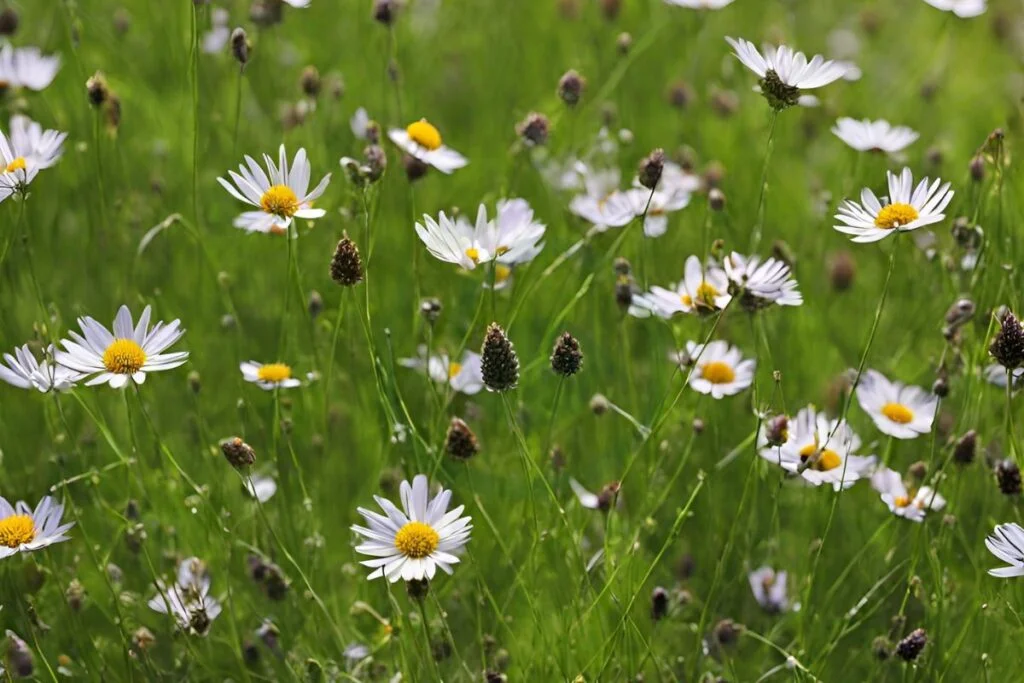
Soil Preparation
Loosening Soil
Loosening soil improves soil aeration to help wildflower roots grow deeply and access more nutrients. This process also facilitates water infiltration, allowing moisture to reach the roots effectively. By loosening the soil, compaction is reduced, promoting healthier growth of wildflowers.
Enhancing Soil
To enhance the soil, consider adding organic matter such as compost to provide essential nutrients for wildflowers. Adjusting the soil pH may be necessary to create an optimal growing environment for the seeds. Conducting soil tests can help identify any deficiencies that need to be addressed before planting.
Sowing Techniques
Scatter Method
Scatter method is a simple and effective way to distribute wildflower seeds across your grassy area. It mimics natural seed dispersal processes, resembling how seeds are spread by wind or animals in the wild. This technique results in a random distribution pattern, creating a natural and organic look in your garden.
By utilizing the scatter method, you can achieve a seamless integration of wildflowers into your existing grassy landscape. The random scattering of seeds ensures that flowers will bloom in various locations, enhancing the overall aesthetic appeal of your outdoor space. This approach requires minimal effort and is suitable for beginners looking to add diversity to their gardens.
Ensuring Contact
Ensuring contact between the seeds and the soil is crucial for successful germination and growth of wildflowers. By pressing down gently on the scattered seeds, you improve seed-to-soil contact, facilitating optimal conditions for germination. This process not only enhances seedling establishment but also helps prevent potential seed loss caused by factors such as wind or birds.
To enhance the effectiveness of the scatter method, lightly rake the soil after scattering the seeds to ensure they are adequately covered. This step promotes direct contact between the seeds and soil, promoting successful germination rates. By taking these extra precautions, you can maximize the chances of a lush and vibrant wildflower display in your garden.
Aftercare Strategies
Watering Needs
Consistent watering is crucial for seed germination. Avoid overwatering to prevent seed rot, which can hinder growth. Adjust watering frequency based on weather conditions to ensure optimal moisture levels.
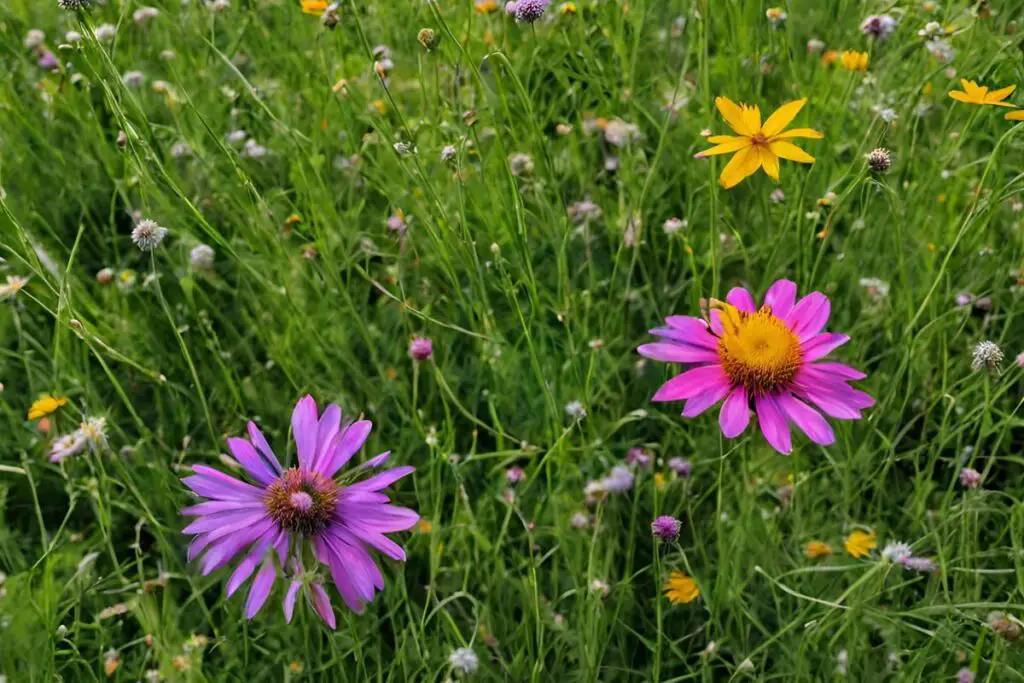
Managing Weeds
Regular weeding helps maintain wildflower beds by reducing competition for nutrients and sunlight. Mulching can aid in weed suppression by creating a barrier that inhibits weed growth. Use manual weeding methods to avoid harming wildflowers while removing unwanted plants.
Seasonal Care
Monitor wildflower growth throughout the seasons to track progress and identify any issues early on. Adjust maintenance practices based on seasonal needs, such as pruning or fertilizing as necessary. Prepare for winter dormancy by cutting back dead foliage and mulching to protect roots, ensuring healthy spring regrowth.
Attracting Pollinators
Selecting Seeds
When choosing seeds, take into account your local climate and soil conditions to ensure successful growth. Opt for a variety of wildflowers that bloom at different times to attract pollinators consistently. select drought-tolerant species for landscapes that require minimal maintenance.
Consider the local climate when choosing seeds, ensuring they can thrive in your region's specific conditions. A mix of flowers that bloom at various times will attract different pollinators throughout the growing season. Drought-tolerant species are ideal for areas where watering may be limited, providing sustainable beauty.
Meadowscaping Benefits
Creating a meadowscape with scattered wildflower seeds establishes natural habitats for various wildlife, including bees, butterflies, and birds. By reducing the need for frequent mowing and maintenance, you can conserve energy and promote a more sustainable environment. This approach not only benefits wildlife but also enhances the overall aesthetic appeal of outdoor spaces.
Establishing a meadowscape using wildflower seeds offers numerous benefits beyond attracting pollinators. The natural habitat created supports a diverse range of wildlife, contributing to ecological balance in your surroundings. Furthermore, by reducing the frequency of mowing and maintenance tasks, you can save time and resources while promoting a more eco-friendly landscape design.
Creating a Wildflower Meadow
Design Considerations
When planning a wildflower meadow, ensure you select seeds that will bloom at different heights and colors. This diversity creates an aesthetically pleasing landscape.
Incorporate focal points within the meadow by strategically placing wildflowers with vibrant colors or unique shapes. These blooms can serve as eye-catching features.
To enhance accessibility and maintenance, consider adding pathways throughout the meadow. These paths not only provide easy access but also aid in regular upkeep.
Maintenance Tips
Regularly deadhead spent flowers to encourage new blooms and prolong the flowering season. This practice helps maintain the meadow's overall appearance.
Keep a close eye on pests and diseases that may affect your wildflowers. Early detection allows for prompt treatment, preserving the health of the plants.
Maintain the balance of your wildflower meadow by trimming back any overgrown plants. This practice ensures that all flowers receive adequate sunlight and resources for healthy growth.
Common Challenges
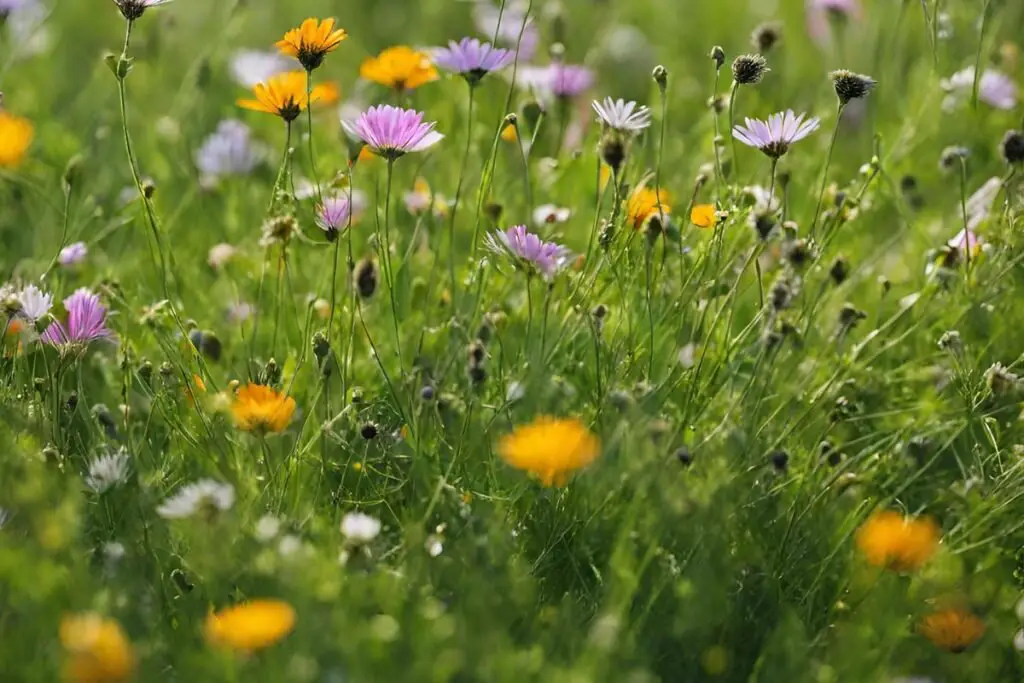
Overcrowding
To tackle overcrowding, thin out dense areas in the grass to allow for better air circulation. This helps wildflowers receive adequate sunlight and nutrients for optimal growth. By reducing overcrowding, you prevent competition among the wildflowers, ensuring each plant has enough space to thrive. This promotes healthier growth and enhances blooming patterns across the entire meadow.
Disease Management
For effective disease management, maintain good garden hygiene practices to prevent diseases from spreading among your wildflowers. Promptly remove any infected plants to prevent further contamination within the meadow. Consider planting disease-resistant wildflower varieties to proactively safeguard your meadow against potential diseases.
Success Stories
Visual Inspiration
Draw inspiration from botanical gardens and wildflower meadows. Online resources offer wildflower garden ideas. Local nurseries provide hands-on visual inspiration.
Explore various botanical gardens for diverse wildflower displays. Online platforms showcase innovative wildflower garden designs. Nurseries offer a tangible experience for choosing suitable wildflowers.
Community Projects
Collaborate with local organizations to execute larger-scale wildflower projects effectively. Engage community members in exciting seed scattering events for a collective impact.
Create educational opportunities focused on wildflower conservation to raise awareness among community members. Involve schools in educational programs to teach the importance of preserving native wildflowers.
Summary
You've learned how to scatter wildflower seeds on grass, from understanding wildflowers to preparing the lawn and soil, sowing techniques, aftercare strategies, attracting pollinators, creating a wildflower meadow, common challenges, and success stories. Now it's time to put your knowledge into action. Transform your lawn into a vibrant wildflower haven that not only beautifies your surroundings but also supports local ecosystems and wildlife. Start scattering those seeds and watch as your garden comes to life with colorful blooms and buzzing pollinators. By following these steps, you can create a sustainable and biodiverse environment right in your backyard.
Frequently Asked Questions: Can You Scatter Wildflower Seeds on Grass?
Can I scatter wildflower seeds on existing grass?
Yes, you can scatter wildflower seeds on existing grass. However, it's important to prepare the lawn properly by mowing it short and removing any thatch to allow the seeds to reach the soil and germinate successfully.
How should I prepare my lawn before scattering wildflower seeds?
Preparing your lawn involves mowing it short, raking to remove debris and thatch, and possibly aerating the soil to ensure good seed-to-soil contact. This preparation helps the wildflower seeds establish themselves and grow successfully among the grass.
What type of soil preparation is needed for sowing wildflower seeds?
For sowing wildflower seeds, loosen the top layer of soil with a rake or garden fork to create a seedbed. Avoid using fertilizers high in nitrogen, as they can promote grass growth over wildflowers. Opt for well-draining soil with good sunlight exposure for best results.
Are there specific techniques for sowing wildflower seeds effectively?
When sowing wildflower seeds, mix them with sand or vermiculite for even distribution. Broadcast the mixture evenly over the prepared soil and lightly press or rake them in. Water gently to keep the soil moist but not waterlogged to aid germination.
How can I attract pollinators by scattering wildflower seeds on grass?
Image Source: Paid image from CANVA


